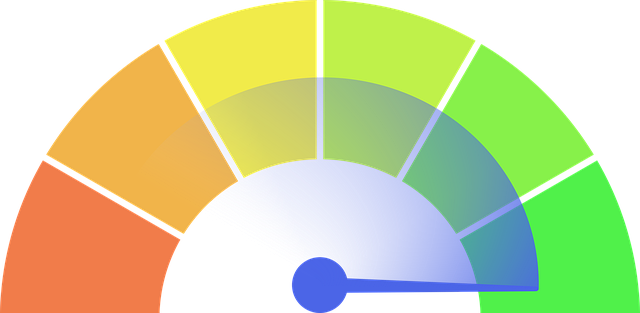Beginner SEO Training focuses on optimizing web pages for higher search engine rankings and organic traffic. Key strategies include keyword research using tools like Google Keyword Planner, incorporating keywords naturally into meta tags, headers, and content, crafting compelling title tags, and writing engaging meta descriptions. High-quality, diverse content formats, proper file names, alt tags, and header tags (H1-H3) enhance user experience and search engine indexing. Image optimization, including alt tags and file name keywords, improves discoverability and page speed. Clean, descriptive URLs reflecting page content contribute to a positive user experience and signal search engines about the page's purpose. Mobile optimization is crucial for today's digital landscape, ensuring accessibility and usability on various devices.
“Unleash your inner SEO expert with this comprehensive guide to on-page optimization! Whether you’re a beginner or looking to brush up on your skills, this article covers the fundamentals of online visibility. From keyword research and compelling content creation to mobile optimization, we’ll break down each essential element. Learn how to enhance your website’s ranking potential through effective on-page SEO strategies, ensuring your online presence shines bright in today’s digital landscape.”
Understanding On-Page SEO: The Cornerstone of Digital Visibility

On-Page SEO is the foundation upon which digital visibility is built, making it a crucial aspect for any website owner to grasp, especially those pursuing Beginner SEO Training. It refers to the practice of optimizing individual web pages to rank higher in search engine results pages (SERPs), thereby increasing organic traffic. By focusing on elements within your site’s control, such as content, meta tags, and page structure, you can significantly impact how search engines crawl and index your website.
Understanding On-Page SEO involves familiarizing yourself with key concepts like keyword research, where relevant terms are identified to drive targeted traffic. It also includes crafting compelling titles and descriptions that not only entice users but also provide a clear indication of the page’s content. Effective on-page optimization ensures that each web page tells a cohesive story, aligning perfectly with user intent and search engine algorithms.
Keyword Research: Unlocking the Power of Relevant Terms

Keyword research is a fundamental step in any Beginner SEO Training. It involves identifying and understanding the terms your target audience uses to search for products, services, or information related to your niche. By using tools like Google Keyword Planner, SEMrush, or Ahrefs, you can uncover relevant keywords with high search volumes and low competition. This process allows you to tailor your content to match user intent, ensuring that your website ranks higher in search engine results pages (SERPs).
Relevant keywords act as a bridge between your audience’s queries and your website’s offerings. Incorporating these terms naturally within your meta tags, headers, and body content improves both the relevance and authority of your pages. It’s crucial to go beyond simply stuffing keywords; focus on creating valuable, informative content that resonates with your target demographic. This not only enhances user experience but also encourages search engines to recognize your site as a trusted source for the topics you address.
Optimizing Title Tags: Crafting Compelling Headlines

In Beginner SEO Training, optimizing title tags is a fundamental step in enhancing your website’s visibility on search engines. Title tags, which appear as clickable headlines in search results, are crucial for capturing users’ attention and conveying what your webpage is about. Crafting compelling headlines involves balancing keyword relevance with readability. Incorporate target keywords naturally within the title, ensuring it remains concise and informative. A well-optimized title tag not only boosts click-through rates but also sends positive signals to search engine algorithms, signaling the relevance of your content.
Focus on creating titles that are both accurate and enticing. Avoid stuffy language and aim for a tone that resonates with your target audience. Remember, an effective title tag is just the beginning; it sets the stage for users to engage with your content further, encouraging them to explore more of what your website has to offer.
Meta Descriptions: Writing Persuasive Summaries

Meta descriptions are crucial elements in on-page SEO, especially for beginners looking to master their first steps in SEO training. These concise summaries appear below a website’s link in search engine results pages (SERPs) and serve as a brief introduction to the content visitors will find on that page. Crafting compelling meta descriptions involves balancing keyword inclusion with persuasive language that encourages users to click.
A good meta description should accurately reflect the content of the page while incorporating relevant keywords naturally. For beginners, focusing on clarity and relevance is key. Instead of cramming in as many keywords as possible, aim to write a summary that persuades users they will find valuable information on the page. This strategy not only boosts click-through rates but also signals search engines about the content’s quality, contributing to better rankings over time.
Content Creation for SEO: Strategies for Engaging and Informative Text

When it comes to Content Creation for SEO, the focus should be on crafting engaging and informative text that resonates with both search engines and human readers. In Beginner SEO Training, one key strategy is to understand your target audience’s needs and queries. Incorporate relevant keywords naturally throughout your content, ensuring a balanced mix of readability and optimization. High-quality content not only attracts visitors but also encourages them to stay longer, reducing bounce rates.
Additionally, diverse content formats such as blog posts, infographics, or videos can enhance user experience. Optimizing these multimedia elements with descriptive file names, alt tags, and captions further improves SEO performance by making your content more accessible and understandable for search engines.
Header Tags (H1, H2, etc.): Structuring Your Content Hierarchically

In beginner SEO training, understanding Header Tags (H1, H2, etc.) is crucial for structuring content hierarchically. These tags help search engines and users navigate your page more efficiently by highlighting key topics and subtopics. An H1 tag, for instance, should encapsulate the main subject of your content, appearing once per page. H2 tags then divide the content into logical sections, followed by H3s for smaller subsections, and so on. This clear hierarchy enhances readability and makes it easier for search algorithms to index your site effectively.
By properly implementing Header Tags, you improve both user experience and Beginner SEO performance. Users can quickly scan through headings to find relevant information, while search engines use these tags to determine the page’s context and relevance for specific queries. This strategic approach ensures that your content is not only optimized for search engines but also tailored to meet the needs of your audience.
Image Optimization: Enhancing Visual Elements for Search Engines

In the realm of on-page SEO, image optimization plays a vital role in enhancing visual elements for search engines. For beginners in SEO training, understanding this aspect is crucial as it significantly impacts how search algorithms perceive and rank web pages. By incorporating relevant keywords into alt tags, optimizing file names, and ensuring images are compressed without losing quality, you make your visuals more searchable. Search engines like Google rely on these metadata to understand the content of an image, which, in turn, improves overall site discoverability.
Additionally, optimizing images for speed contributes to a better user experience. Faster loading times mean visitors can engage with your content quicker and are more likely to stay longer, signaling to search engines that your page is valuable. This multifaceted approach not only boosts SEO rankings but also fosters a vibrant and interactive online presence, making your website a go-to resource in your niche.
URL Structure: Creating User-Friendly and Search-Optimized URLs

In the realm of Beginner SEO Training, understanding URL structure is a fundamental step towards crafting search-optimized content. URLs, or Uniform Resource Locators, are the addresses that direct users and search engines to specific web pages. A well-structured URL not only enhances user experience but also acts as a signal to search algorithms, making it easier for them to understand the context and relevance of your page. When creating URLs, keep them clean, descriptive, and keyword-rich – reflecting the content within – to ensure they are both user-friendly and SEO-friendly.
Instead of complex, jumbled strings of characters, opt for a hierarchical structure that includes relevant keywords. For example, instead of `www.example.com/page123`, consider using `www.example.com/services/seo-training/beginner-seo`. This not only provides clarity to users but also tells search engines exactly what the page is about. Such user-friendly and keyword-optimized URLs contribute significantly to your site’s on-page SEO, making it more discoverable and relevant in search engine results.
Mobile Optimization: Ensuring a Seamless Experience Across Devices

In today’s digital era, mobile optimization is a crucial aspect of beginner SEO training. With the majority of internet users accessing websites through smartphones and tablets, it’s essential to ensure your site offers a seamless experience across all devices. This involves optimizing page load times, ensuring responsive design, and simplifying navigation for touch interfaces. A well-optimized mobile site not only enhances user satisfaction but also improves search engine rankings, making it a fundamental strategy for any online presence.
By prioritizing mobile optimization, you demonstrate to search engines that your website is user-friendly and worth ranking higher. This includes implementing best practices such as using mobile-friendly content, optimizing images for faster loading, and ensuring the site is easily accessible and navigable on smaller screens. These efforts contribute to a positive user experience, encouraging visitors to stay longer and engage more deeply with your content—a key factor in both SEO and retaining audiences.
